Items
Tag is exactly
Air Force
-
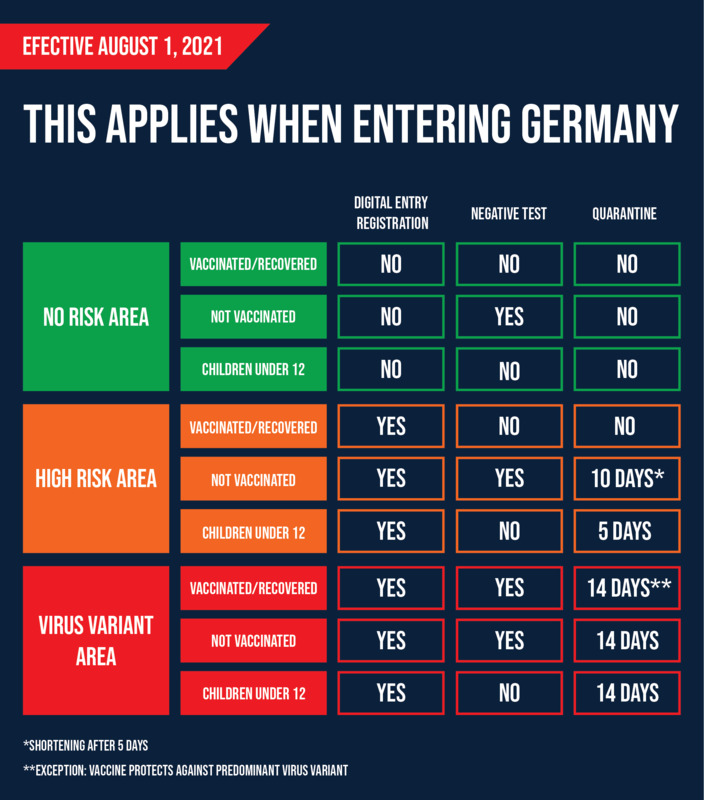 2021-08-01
2021-08-01Germany Travel Quarantine Guide
Germany would update its travel policy multiple times a month, depending on the number of COVID-19 cases in the country. As the rules would change so often, our command would release simple-to-follow articles that clearly explained what we had to do. This photo is a snapshot from an article that explains quarantine requirements when traveling into Germany from other countries. -
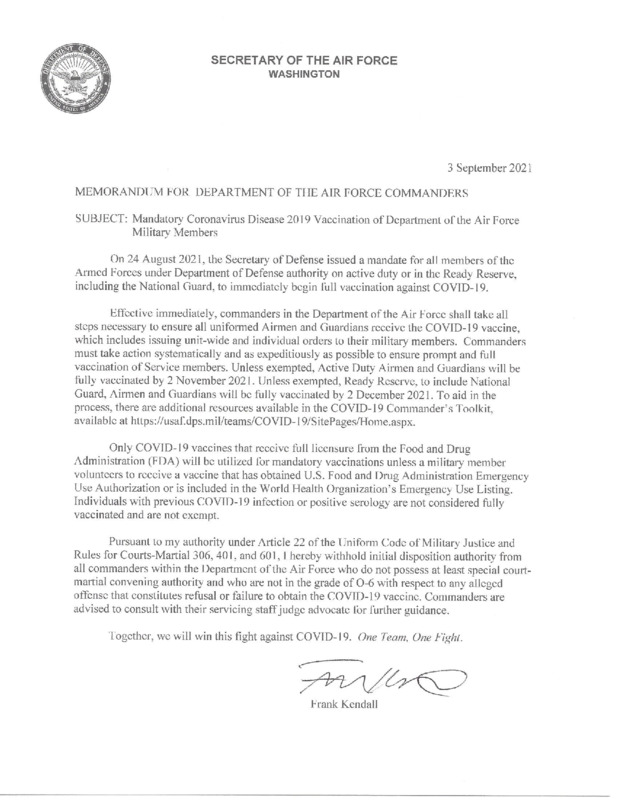 2021-09-03
2021-09-03Mandatory Vaccine for Military
Attached is a letter from the Secretary of the Air Force that mandates all Air Force and Space Force members must be vaccinated for the Coronavirus Disease by 2 November 2021. -
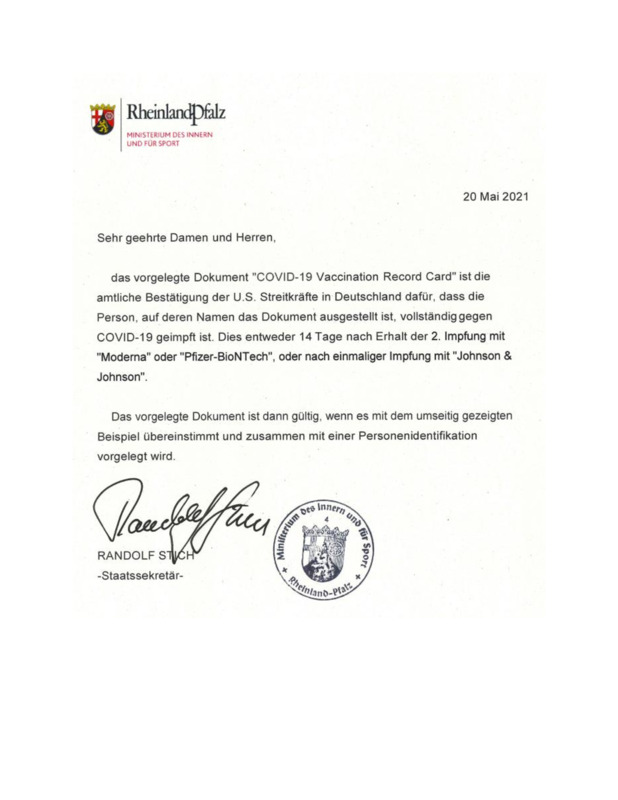 2021-05-20
2021-05-20US to German Vaccine Memorandum
The attached is a letter from the Rheinland-Pfalz state secretary that explains and validates the COVID-19 Vaccination Record Card that the CDC gives out with vaccinations. Many US military members in Germany received the vaccine, but our vaccine cards were not recognized by local German establishments as German and other European vaccine cards looked very different. In Germany, people were not allowed to eat inside restaurants if they were not vaccinated. By carrying the attached letter with our CDC-issued vaccine cards, we were able to visit local establishments. -
2021-09-29
Covid in Altus Oklahoma
I wanted to share my personal experience of living through the COVID-19 Pandemic in Altus Oklahoma. While my experience probably looked very similar to others, I believe it is very important to always information share so everyone can have the complete picture. I am active duty Air Force, and was residing in Altus Oklahoma during the pandemic in 2020. Living on a military base, it is not very often that you have quiet hours or down time. However, during the height of the pandemic, the majority of the base shut down and went to minimum manning for almost 30 days. It was strange to see operations halt, and all non essential workers staying home with their families for the duration of the town shut down. Organizations went from in person working to relying on home desktop computers to get the mission done. During this time people were also limited on where they were allowed to travel, and people they were allowed to see. At one point, some people were not even allowed to go on walks outside, because they were not sure how the virus would spread and if it would be safe being close to others. As doctors and scientists started discovering the make up of the virus and how to mitigate against its effects, we started gaining more liberties back. Members were no longer confined to their homes, we were able to do outdoor activities near the base, and were allowed to travel to nearby towns for any essential items. Looking back on the situation that occurred a little over a year ago, it is hard to imagine and remember what it was like to be confined to our homes and not being able to engage in social gatherings. One thing that is pandemic has highlighted to me is that despite all the adversity the world has faced, we are still determined to get the mission done efficiently and effectively everyday. I would also like to highlight the importance of social connectedness and gatherings. During the isolation period of the pandemic, the majority of people suffered from lack of communication and not being able to connect with those around them. If this pandemic has taught us anything it should be to not take your health for granted and to value the time you have with loved ones, because you never know when it will be your last time together. -
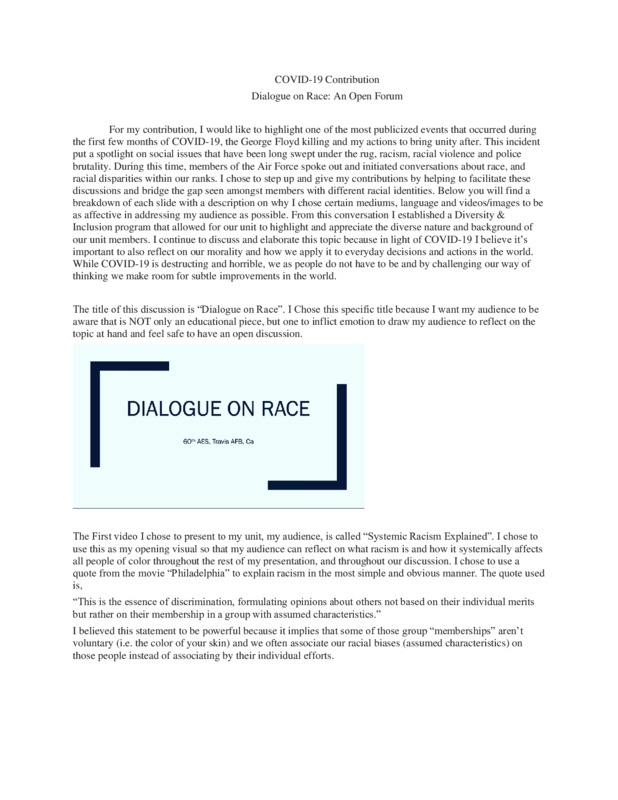 2020-06-27
2020-06-27Dialogue on Race
For my contribution, I would like to highlight one of the most publicized events that occurred during the first few months of COVID-19, the George Floyd killing and my actions to bring unity after. This incident put a spotlight on social issues that have been long swept under the rug, racism, racial violence and police brutality. During this time, members of the Air Force spoke out and initiated conversations about race, and racial disparities within our ranks. -
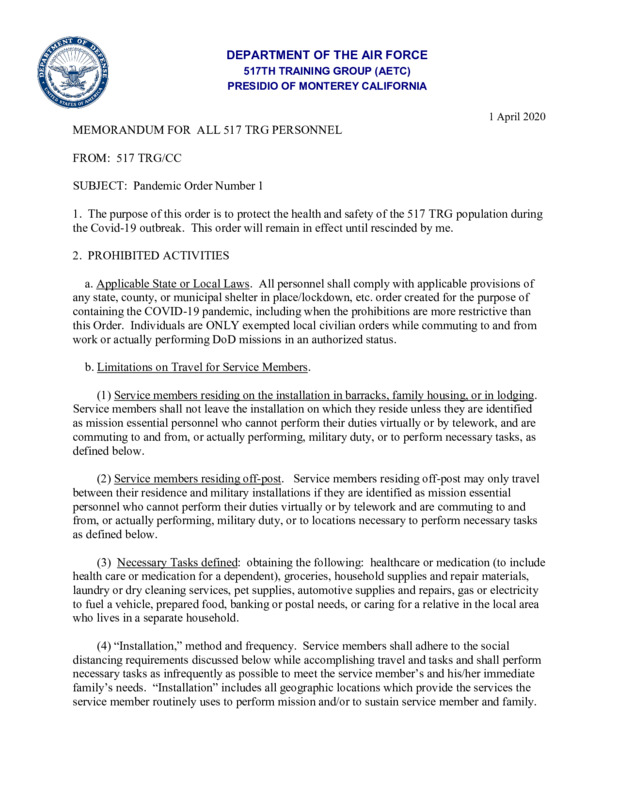 2020-04-01
2020-04-01How Military Base COVID-19 Protocol affects Military Dependents- Presidio of Monterey base guidelines
My husband is active duty Air Force. Most base housing is several miles away in Seaside, Ca. However, we were given the option to move into the historical housing on post, which meant my husband could walk to work and we have a stunning view of the Monterey Bay and Pacific Ocean. This also means that we must show our identification whenever we return home and obey base regulations. So must the thousands of language students attending DLI (Defense Language Institute). It means my daughter couldn't have a birthday party this summer. Students under my husband could head to a local pub or bar to celebrate their birthdays either. My daughter couldn't play on the playground with friends, and the students here had to collect their meals from the mess hall to take back to their dorms instead of chatting with classmates. My daughter couldn't go back to school after spring break and the language students had to begin distance learning and quarantine. As difficult as it was for my daughter to be without her friends, she could still play in the yard and hug her mother. My husband's students had to go months with no physical contact. However, these protocols were instituted to keep everyone safe whether or not they live on base. How difficult must it have been for base leadership to tell us families and students that we couldn't do the things that make us happy? That the mission must continue in spite of this pandemic? I don't envy their job. -
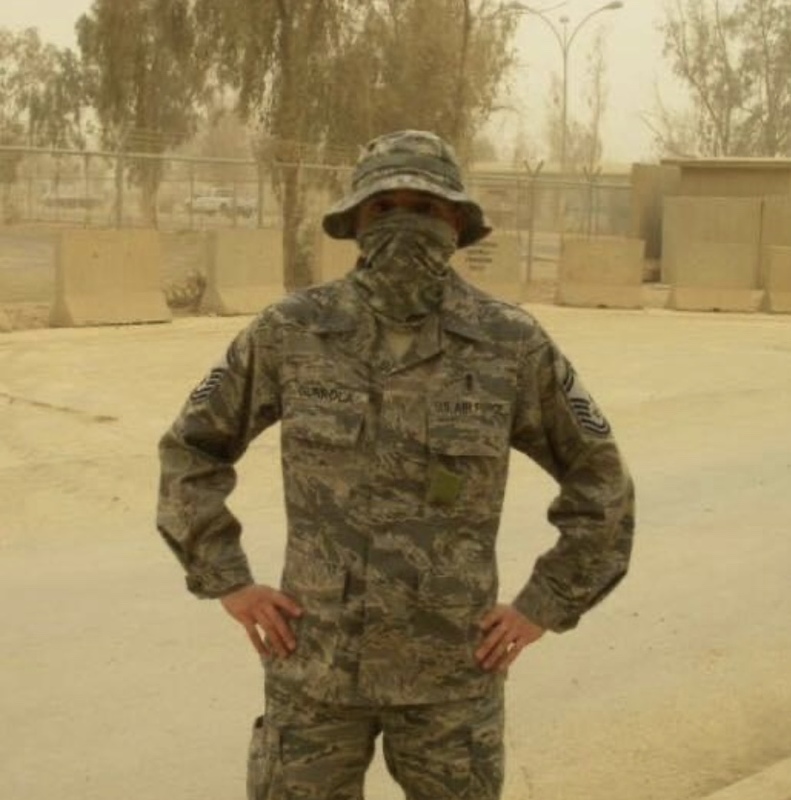 2020-10-15
2020-10-15Patients without voices
COVID-19 has changed many aspects of our lives, one that I would have never thought was using a mask in public. I began my Air Force career as a surgical technician in 1992. Wearing a mask was part of the job. The mask was worn to protect the patients, we did not want to breathe germs onto the surgical site. It had secondary a secondary purpose as well, to protect us from the patients' bodily fluids. Though talking was allowed in the surgical suite it was limited and the distance between the team was usually less than a few feet. We also learned to use hand gestures to communicate with each other, for instance if a surgeon was suturing and wanted us to cut the suture she or she would use the index and middle fingers to mimic scissors cutting. In 2008 found myself in Iraq, this time I had to shield my face not because I was in an operating room but because the sand storms. The mask allowed me to venture outside the facilities for limited periods of time during the storms. As medical professionals, depending on where you work, the use of masks is not something new. What is new is that now the patients are wearing masks. At first glance this might not seem like much of an issue, occasionally patients would have to wear masks as well. As most of us have noticed, communication has been hampered with the use of masks. It is harder to here, muffled voices, it is harder to differentiate between similar words/sounds, and we cannot use the use or other senses to assist us such as sight. In addition patients whom might have difficulty breathing have a harder times breathing by wearing masks. It is imperative the communication between the patient and a clinician is flawless. If hearing is impaired or words are mistaken the consequences can be deadly. COVID-19 Has caused us to slow things down even further, we must double check and sometimes triple check to make sure we collected the correct information. We need to listen to what they are saying without the aid of their faces. Deaths caused by medical errors are a major concern for all, now add a barrier that is foreign to most patients and those errors can become even more common. Now I find myself in Biloxi, MS and in some strange way everyone became an OR Tech, we are all wearing masks. On a serious note, may we all learn and grow from this experience and not let it go to waste. -
-0007-10-18
The Smell of Quarantine
During the early days of the pandemic, I flew from my duty station at Marine Corps Air Station Yuma to Marine Corps Base Camp Lejeune to attend an eight week school. While most of the country was shutting down, the military was forced to find solutions to mitigate risk of infection while still maintaining readiness. The solution to this was isolating service members for two weeks prior to training, protecting potentially infected service members from each other while giving time to monitor for potential symptoms. Looking back at my experience being restricted to a room for two weeks, what stands out to me is not how I stayed occupied, the food that was provided, or how I communicated with family, but the smell of the particular hand soap I had in that room with me. Through meticulously using it to clean and wash my hands, the scent filled my room, and I became more annoyed with that smell than I was being restricted to a room. The smell of that soap slowly became my memory associated with the COVID-19 Pandemic. Looking back at that time, five months later, the smell of that soap still standouts as my COVID-19 memory, and I don’t think I’ll be buying that soap in the future. -
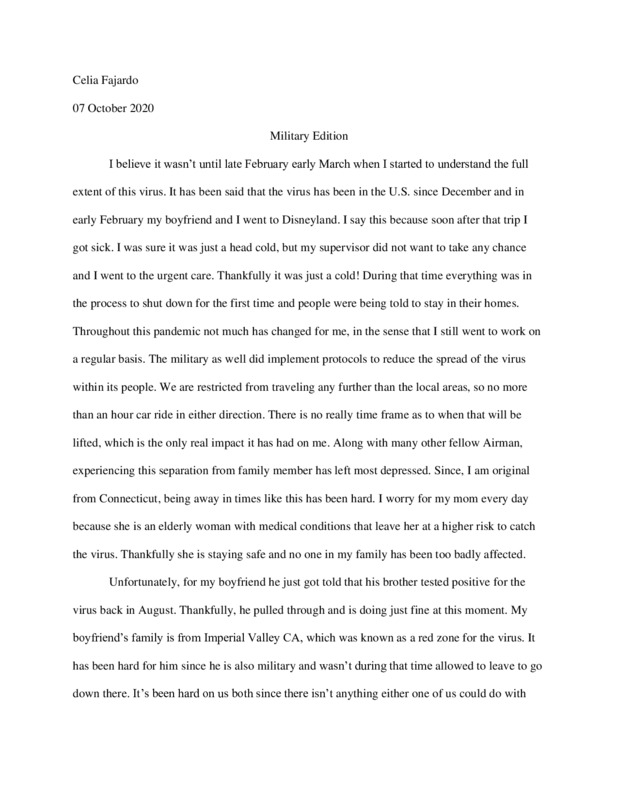 2020-10-07
2020-10-07Military Edition
this story is important to me because members who are serving in the armed force, will understand and relate to the struggles that I went through during this pandemic. -
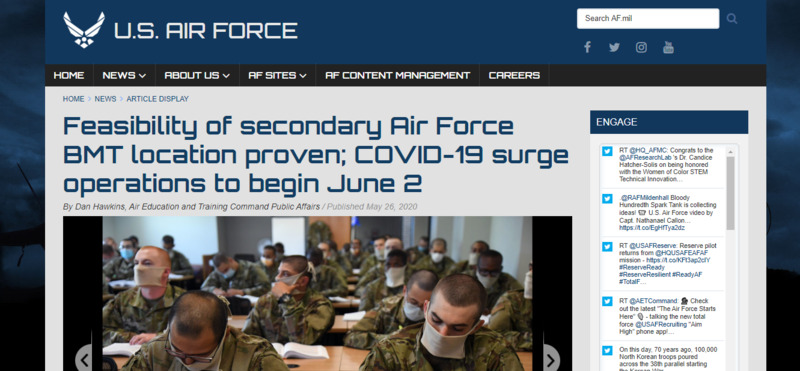 2020-05-26
2020-05-26Basic Military Training
Basic Military Training to resume in second location. -
 2020-04-05
2020-04-05Joint DOD-USAF Guidance on the Use of Cloth Face Covers
These documents outline the proper use of cloth face masks on US military installations per the US Department of Defense and the Department of the Air Force. Also included is a memo to all personnel at Joint Base San Antonio (Fort Sam Houston, Lackland and Randolph AFBs, and Martindale Army Airfield) from the base commander addressing the DOD's COVID-19 responses, and how they will be implemented on base. This resource also includes a tutorial on how to wear and create homemade PPE.
